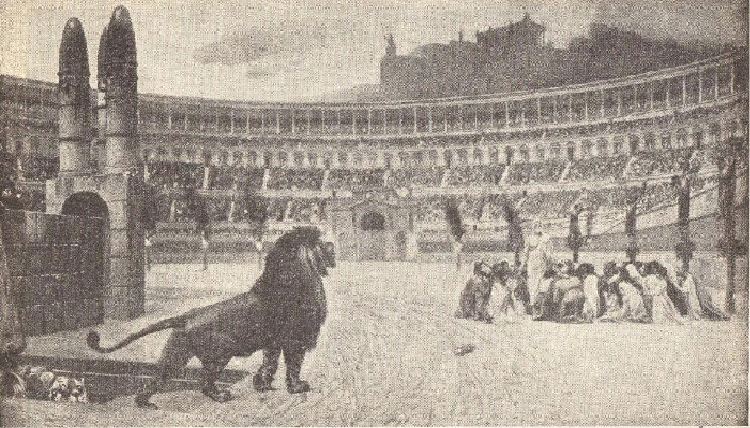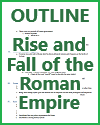| Christian Martyrs in Ancient Rome |
|---|
| www.studenthandouts.com ↣ World History ↣ Ancient Rome ↣ Ancient Rome Maps & Pictures |
 |
|
Christian Martyrs in the Arena: Painting by Gérome. Early Christians were persecuted by the Romans. This persecution started under Emperor Nero, who blamed the small Christian group for a fire which engulfed the city of Rome. Click here to enlarge.
Early Christian martyrs in ancient Rome faced persecution and often met with various fates, including imprisonment, torture, and death, for their refusal to renounce their faith in Christianity. The Roman Empire, especially during periods of intense Christian persecution, witnessed a range of methods employed to suppress the new religious movement. Imprisonment: Many early Christians were arrested and imprisoned for their beliefs. In some cases, they were held for extended periods in harsh conditions. Torture: Some Christian martyrs were subjected to severe torture in an attempt to force them to renounce their faith. Torture methods included flogging, burning, and crucifixion. Execution: Several early Christians were executed for refusing to worship the Roman gods or the emperor. The methods of execution included crucifixion, beheading, burning at the stake, and being thrown to wild animals in the Roman arenas, a form of public entertainment known as damnatio ad bestias. Public Persecution: Early Christians were often subjected to public ridicule, humiliation, and persecution. They were sometimes forced to participate in pagan rituals or publicly renounce their faith. Forced Apostasy: In some cases, early Christians were pressured to offer sacrifices to Roman gods or to the emperor as an act of loyalty to the state. Those who refused were considered enemies of the state and often faced dire consequences. Underground Communities: To escape persecution, some early Christian communities went underground and practiced their faith secretly. Catacombs and hidden gatherings provided safe spaces for worship. Martyrdom: Many early Christian martyrs willingly faced death rather than renounce their faith. The term martyr itself means witness, as these individuals were seen as bearing witness to their beliefs through their steadfastness in the face of persecution. Notable early Christian martyrs include figures like Saint Stephen, who was stoned to death, and Saints Peter and Paul, who were both executed in Rome during the first century. The persecution of Christians varied in intensity and focus throughout the Roman Empire, with some emperors being more aggressive in their efforts to suppress the new faith. For instance, Emperor Nero initiated a brutal wave of persecution after the Great Fire of Rome in A.D. 64. Despite the persecution and challenges they faced, the early Christian community continued to grow and ultimately played a significant role in the spread of Christianity throughout the Roman Empire and beyond. The martyrdom of these early Christians became an enduring symbol of their commitment to their faith and a source of inspiration for future generations of believers. |
 |  |  |  |  |  |
| Ancient Rome Books and Films | Ancient Rome Outlines and PowerPoints |
| Ancient Rome Maps and Pictures | Ancient Rome Study Games |
| Ancient Rome Miscellany | Ancient Rome Worksheets |
| www.studenthandouts.com ↣ World History ↣ Ancient Rome ↣ Ancient Rome Maps & Pictures |








